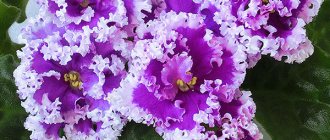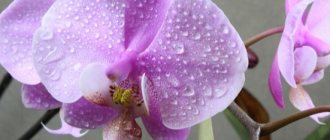How and why to prune and pinch an azalea after flowering
Caring for azaleas after flowering necessarily involves annual pruning. This applies not only to flowers that are grown in the garden or country house, but also to indoor ones. Proper pruning not only helps to renew the bush, but also saves from the appearance of pests, and also prevents diseases.
Gloxinia has faded - what to do next, how to care
How to prune an azalea after flowering:
- Take a sharp and clean pruning shears. Before the procedure, it is recommended to disinfect its blades in a special disinfecting solution, then wipe dry.
- First, dry, diseased and rotten branches are cut off.
- If the bush is thickened, there are thickened perennial shoots on it, it needs to be thinned out. On adult shoots, 4 leaves are left, the rest are cut off.
- Young but too elongated shoots need to be pinched.
- Faded inflorescences are cut off along with the pedicels.
- Old woody shoots that are too thick are cut off to the very root.
Important! The areas of each cut must be disinfected by treating with a solution of potassium permanganate or sprinkled with crushed tablets of activated carbon.
How to choose the right plant?
Tips for choosing Azaleas are about the same as for buying most indoor plants:
- It is preferable to choose a flower on which the first buds have just appeared. It is worth adhering to this rule first of all, since the plant in any case experiences stress when moving from its usual environment. But it was noticed that not in a blooming state, Azalea quickly adapts to new conditions.
- It is recommended to evaluate the external condition of the bush. To do this, it should be carefully tilted. If there are fading or even dry leaves at the base, then it is obvious that such an Azalea grew in an uncomfortable place. There is a risk that she will not survive the move and will quickly wither away.
Azalea in a pot
If you purchase a plant that is already flowering, then the only recommendation is not to try to immediately transplant it into a new pot. It is better to wait until the flowering ends or at least its peak. Otherwise, there will be very little chance of successful survival of such a magnificent flower.
Pests
Strawberry mite - this pest poses the greatest danger to azaleas.
The damage begins from the tips of the shoots, buds, buds and flowers. The leaves begin to fold into boats, the number of buds increases, but they become smaller. The top consists of small leaves of a deformed shape. The growth of the plant comes to naught, the buds stop opening or form small, quick-drying flowers.
If an azalea is infested with a mite while in bloom, its flowers will begin to brown or become discolored.
The varieties that are especially susceptible to this pest can be called “Madame Petrik”, “Erie”, “Niobe”.
Watering
Azalea should be watered frequently in summer, every 1-2 days, but with small portions of water. It is better to moisten the soil in small doses; water for irrigation must be settled and “softened.”
It won’t hurt to get a small sprayer and regularly lightly moisten the air and leaves for your Azaleas. But this procedure will have to be stopped during flowering, otherwise the flower petals can quickly be damaged.
In winter, the flower is watered a couple of times a week.
Spraying an azalea
When can you prune mock orange?
The plant tolerates pruning well. They are held throughout the season. How and when to prune jasmine? There is a scheme:
- in spring - remove frost-damaged fragments and broken parts;
- after flowering - eliminate broken branches, wilted flowers, thin out the bushes;
- in the fall - prepare the crop for winter by cutting off old branches.
It is important to know! Pruning shrubs in autumn helps the plant spend less energy feeding unnecessary roots, and also increases resistance to cold. Flowering bushes are thinned out annually
This is due to the appearance of a large number of branches and shoots. Leaves and flowers become small. Basal branches are pruned to the very base
Flowering bushes are thinned out annually. This is due to the appearance of a large number of branches and shoots. Leaves and flowers become small. Basal branches are pruned to the very base.
The end of winter is the ideal period for rejuvenation. The amount of foliage on the bushes decreases. The branches look unattractive. These signs indicate the aging of the bush. Before the kidneys swell:
- pruning old branches;
- removal of affected shoots;
- crown formation.
Jasmine is characterized by powerful roots that provide nutrition to a large number of young branches. The old crown is removed, activating the development of shoots. After spring pruning, jasmine bushes are fertilized at intervals of 10 days, adding phosphorus-potassium products. At the same time, they are watered abundantly and covered with a mulch layer.
After pruning, water the bush regularly
Possible problems during cultivation
When growing azaleas, there is a risk of various problems. To deal with them, you need to establish the cause.
Powdery mildew
The cause of the disease is considered to be impaired air circulation and sudden temperature fluctuations. In this case, the damaged fragments become covered with plaque.
Late blight
This disease affects the stem and leaves of the crop, which leads to its rotting. The problem occurs at high humidity and temperature. Fitoverm will help cope with the disease.
Gray rot
This is a fungal infection that affects leaves, stems and buds. At the same time, they become covered with brown spots. A soap solution will help cope with the disease.
Rust
With this disease, spots appear on the plant. Over time, the leaves fall off. Bordeaux mixture will help cope with the disease.
Chlorosis
With this disease, the leaves change their shade - they become lighter. Iron chelate will help cope with the disease.
No flowering
The reasons for the lack of flowers are considered to be a lack of diffused light, insufficient watering, incorrect soil composition, and lack of fertilizers.
Lack of buds
The absence or fall of azalea buds is due to temperature fluctuations or changes in weather conditions. Transplanting a plant or lack of fluid also leads to problems.
Aphid
These small insects cause a slowdown in crop development and spread viruses. Actellik and Karbofos will help you cope with them.
Black thrips
These pests attack azalea foliage. As a result, it acquires a yellow tint and falls off. Karbofos will help cope with pests.
These pests lead to the appearance of cobwebs on the bushes. Actellik will help you cope with them.
Mealybug
These parasites infect all fragments of the crop and create conditions for the development of sooty fungus. Actellik will help eliminate pests.
Whitefly
This butterfly absorbs plant sap. As a result, they wither and die. Aktara or a soap solution will help you cope with pests.
Azalea dormant period
Dormancy for an indoor flower occurs after transplantation; it lasts from May-June to November-December. Typically, flower crops are left untouched throughout the sleep phase, but this does not apply to rhododendrons. The rest period is used to apply regular fertilizing. Mineral complexes with a high content of phosphorus, nitrogen and potassium are suitable for this. Fertilizing is applied at the root weekly.
Special complexes that are created for this species are used at different stages of development:
- Before flowering, Zircon is added. It stimulates budding and development of the root system.
- Foliar feeding is carried out with Epin solution. It cannot be used during active growth or budding.
- With active development and establishment of shoots earlier than planned, Ferovit is applied. This remedy is rich in iron and can stop the start of exiting the resting phase too early.
How to care for an exquisite plant
Like any cultivated plant, azalea requires, although simple, certain care.
It should be plentiful, especially for young seedlings. The intensity of watering is determined by the appearance of the top layer of soil. That is, if the soil outside looks dry, then the plant needs to be watered. In addition, garden rhododendron prefers increased humidity, which is created by spraying the flower with a spray bottle. This procedure is carried out during the day in very hot and dry weather. Also, for additional moisture, you can use several open vessels filled with water, which are placed near the plant.
Loosening the soil
Produce regularly after each watering. This will preserve moisture and saturate the soil with additional oxygen, which is necessary for the normal development of the root system and the entire plant as a whole.
To loosen the soil, a hoe is usually used, with which the upper layer of soil near the trunk is carefully loosened so as not to injure the root
Fertilizer application and soil composition
Azalea is very demanding on the composition of the soil, therefore, before planting the plant, it is necessary to select its composition correctly. The most acceptable option is soil consisting of:
- humus;
- sand;
- peat;
- coniferous land. This substrate consists of rotted needles of pine, larch, fir or other coniferous trees. Such soil can be purchased at garden stores or collected independently in the forest under coniferous plants;
- turf land. Such soil is prepared from grass that rots over a certain period of time;
- leafy soil. This substrate consists of rotted leaves of bushes and trees. It can also be purchased in stores or collected under any tree.
To prepare a high-quality earthen composition, all of the above elements are mixed in equal parts. This will create acidic and breathable soil, which is best suited for growing garden azaleas.
You need to start fertilizing the plant a month after it is planted in open ground. Subsequent feedings are carried out every twenty days. As fertilizers, you can use organic and mineral additives intended for ornamental flowering crops, which are easy to find in any specialized store.
Azalea pruning
Pruning azaleas is extremely necessary . The intensity of its flowering depends on timely pruning. A large amount of green mass on the shoots will be an obstacle to the formation of buds. Azaleas need to be pruned every spring after flowering.
Take a sharp knife or pruning shears. Disinfect them with alcohol. First you need to trim long shoots , the length of which exceeds the average length of all shoots, then densely growing shoots . If your azalea has weak, poorly growing shoots, they can also be removed. The more branches you cut, the better they will be covered with greenery. The main thing is not to overdo it, common sense should always be present. After trimming, disinfect the cut areas with RanNet paste. After pruning, new leaves will appear within a few weeks.
Using pruning, you can form a crown ; the most attractive is considered to be a spherical crown with a bare trunk (ideally, if everything is done in a timely and correct manner, the azalea will look like a miniature tree). After pruning, for a short time until replanting (if required).
And we gradually got to the most difficult thing - replanting the azalea after flowering.
The importance of pruning for indoor rhododendron
For this plant, pruning is simply extremely important. This is not only from an aesthetic point of view, first of all it is necessary for its proper growth and flowering. If Rhododendron is not trimmed on time, the flower will have too much green mass , which, in turn, will prevent the appearance of new flower buds. If the pruning period is long, then be prepared that your favorite plant will turn into an ordinary shrub.
In order for the plant to bear fruit, it must be pruned after each flowering.
Transfer
How and when to replant an azalea at home?
It is recommended to replant young plants annually, and adult plants every two or three years.
Azaleas are replanted in the spring, after flowering.
It is not recommended to replant azaleas during budding and flowering.
Otherwise, the plant may lose buds, flowers and leaves. It will be difficult to save him.
How to replant an azalea? When transplanting an azalea, it is important to know that it has a very sensitive root system, which has its own microflora. Mushrooms live on its roots, providing the azalea with adequate nutrition.
Therefore, it is very important not to disturb this symbiosis during transplantation.
The correct substrate is very important for the healthy development of the plant. It is desirable that it be acidic, with a pH of 4.5 to 5.5, light and nutritious.
You can take a ready-made mixture called “Azalea” or prepare the soil yourself by taking 1 part peat and 2 parts rotted pine needles. Or you can mix peat, humus, sand, turf and leaf soil in equal parts and add 5 parts of coniferous soil to them. Another option:
- part of sand
- part of dried and crushed sphagnum moss
- 2 parts of rotted pine needles.
For azaleas with a shallow root system, the new container should be selected wide enough and not very deep, but 5 cm higher than the previous one.
A layer of drainage at least 3 cm thick in the form of large expanded clay or broken shards is placed at the bottom of the pot. A layer of pine bark is placed on the drainage (it helps increase the acidity of the soil), and then the container is filled with prepared soil. It is useful to add Trichodermin to the substrate to prevent fungal infections and rot.
Before transplanting azaleas, cut off dry twigs and faded buds and clear the stems of dried leaves. Next, the bush, along with a lump of earth, is taken out of the pot and placed with its roots in a basin with filtered or boiled water and “Kornevin” or “Zircon” dissolved in it.
The procedure is repeated, changing the water twice. The roots of the azalea are very tightly entwined with a lump of earth, so it is impossible to completely remove it, and it is not necessary. However, such bathing helps to wash away most of the salts that have accumulated in the soil over the year.
Before immersing the plant in water, it is recommended to make cuts in the earthen coma using a knife - these should be grooves about 0.5 cm wide on the sides, bottom and top. This will help the roots become saturated with moisture, making it easier to settle in and germinate in the new soil. Otherwise, they will not be able to receive enough nutrients and will dry out, which can lead to the death of the plant.
After part of the soil (usually no more than a third) is washed away from the roots, you can begin replanting, or rather, transferring the flower into a new pot. It is taken out of the basin and, when the water has drained, placed in the center of the container, and then the roots are evenly sprinkled with earth, lightly tamping
It is very important not to bury the root collar of the plant.
If the azalea has grown too much, it is divided into bushes by cutting the root ball into several parts according to the number of divisions. Each bush with a lump of earth is placed in a separate pot.
What to do after transplanting an azalea?
After transplantation, the azalea is watered generously with the water in which it was soaked and placed in a warm and bright place with shade from the sun's rays. Watering is repeated after four days. The plant is kept in partial shade for about 12 days. It is useful to spray a flower that has not yet matured after transplantation with Zircon or Epin.
You should also protect the weakened plant from drafts. You should not immediately fertilize the transplanted flower; you must give it the opportunity to adapt and get stronger.
Replanting after purchase
It is not advisable to immediately subject a newly purchased azalea to the transplant procedure. Let the plant remain in quarantine for several days - separately from other flowers.
During this time, it will adapt to unfamiliar conditions and will be able to move painlessly to a new pot.
Often, azaleas are sold in the store in bloom and, according to the rules, they cannot be replanted at this very moment.
However, if it is flooded and sick or its capacity is clearly too small, you can make an exception and change the soil and pot for the plant
But this must be done very carefully, using the transshipment method, only slightly cleaning the root ball
««««««««««««««««««««««««««««««««««`
Soil requirements and planting
The culture feels comfortable in acidic and loose soils. The soil should contain the following components:
- sand;
- coniferous land;
- peat.
Soil acidity should be between 4.0 and 4.5.
Plants should be planted in early spring or autumn. If you plan to plant an azalea in the spring, then this should happen before sap flow begins.
Planting garden azaleas in the fall should be done in early September so that the seedling can take root before the onset of frost.
The azalea bush has a shallow root system. Therefore, there is no need to make a deep hole. However, there are a number of conditions:
- The planting hole should be about 50 cm deep and 70 cm in diameter.
- It is recommended to lay drainage (20 cm high) at the bottom. It should be made of broken brick, expanded clay and sand. Broken bricks are used to acidify the soil. You should not use crushed stone, as this can lead to alkalization of the soil.
- The soil that was dug out of the hole should be mixed with peat, humus and coarse sand. This mixture will increase the looseness of the soil and its permeability.
- The soil mixture should be placed in a heap on top of the drainage layer. Next, a seedling is installed on the hill.
- The root ball is carefully covered with soil and the soil is compacted around the plant. If the need arises, you need to sprinkle a little more soil and water it with water. The root collar should be slightly above ground level.
- The ground around the seedling must be mulched with peat or tree bark. This will maintain moisture in the soil and prevent weeds from multiplying.
Provided that the crop was purchased from a nursery or garden center, the bush must be watered before planting. It is also recommended to immerse the root ball in water for a while until air bubbles appear.
Possible errors and their consequences
When caring for azaleas, mistakes cannot be avoided.
It could be:
- Unsuitable soil. The plant will not receive the necessary substances.
- Not a sterile instrument. Can lead to infection of azaleas with pathogenic flora.
- Root damage. Deadly and should be avoided as much as possible.
- No trimming or pinching. Affects the appearance of the azalea, but is not dangerous.
- Insufficient air humidity. May cause drying and cause some diseases.
- Feeding and stimulation immediately after flowering. May cause root damage and death.
- Watering with inappropriate water. This is fraught with infections.
- Overfeeding or complete lack of feeding. Both can destroy the azalea.
Each of these mistakes can lead to serious plant disease or even death. Also, improper care, pests and other reasons can cause the plant not to bloom. You can find out more about why azalea does not bloom here.
First care after the procedure
Post-procedure care is simple. After treating all cut areas, it is necessary to give the plant a day to “heal the wounds,” otherwise, with the first watering of the Azalea, rotting may begin (how should it be watered and what are the consequences of incorrect actions?). After this, carefully water the leaves using a spray bottle. The water should be clean and if you use tap water, then let it sit for 2 hours.
It is best to use melted, slightly cool water after pruning. This way the flower will quickly “come to life”.
Thus, it is necessary to strictly follow the rules of care for this plant. It requires attention, so watch it grow. Do not neglect the instructions, otherwise, instead of beautiful buds, you may end up with dried out ikebana.
In this case, it is worth monitoring the external condition of the plant. Since this flower does not tolerate warm places well, after pruning it is best to move it to a dark, cool room. There the flower can quickly “come to its senses” and delight you for many years to come.
The main thing to remember is that weak and diseased shoots are cut off first , since they have the most negative effect on the practical growth and reproduction of the flower. Then start shaping the appearance of the plant.
Read about the intricacies of caring for azaleas at home after purchase here.
For azaleas, it is very important to create the right environmental conditions. You can read about them in our articles; we also recommend that you familiarize yourself with the application of fertilizers.
When does rhododendron bloom?
So that the capricious beauty blooms
The flowering of azaleas depends on the conditions during the dormant period.
The main thing is cool temperature . If the temperature after flowering is above 18 degrees, flower buds will not form. The ideal temperature is 15-16 C.
difficult to follow the rule at home , so many gardeners cannot achieve flowering.
Experienced azalea owners advise leaving the azalea outside until cold weather sets in, and then keeping it on an unheated balcony until it freezes. After spending enough time in the cold, the flower will set buds for winter.
Shortly before the start of the expected flowering, when the buds are collected, you need to pluck out the young shoots. They weaken the azalea and impair flowering.
When does azalea bloom?
Depending on the variety, azalea blooms from February to June. During flowering, special attention is paid to fertilizer.
Experienced flower growers recommend the following preparations:
- Zircon
Suitable for spraying and root feeding. Used once a week . Stimulates flowering and growth of the root system.
- Epin
Used for spraying once every 2 weeks . Can only be used before the buds open.
- Ferovit
Iron-containing drug. Necessary for increasing leaf mass. Used for root and foliar feeding.
- Fitosporin
Prevents diseases and root rotting .
- Emerald
Essential for preserving the shine and richness of foliage color.
- Lemon juice or acid
Added in small quantities to water for irrigation once every 10 days . Acidifies the soil.
During flowering, the plant needs bright, diffused light . But don't put it in a hot place or in direct sun - it will drop the flowers.
During flowering, azaleas need to be
watered Soft water is used for irrigation
Tap water contains lime and chlorine; these substances are contraindicated for azaleas.
The liquid must be settled, filtered or softened by freezing.
Natural hydration is effective for maintaining moisture . The tray under the azalea is filled with a layer of expanded clay, filled with water and the pot is placed. Make sure the bottom does not touch the water. Expanded clay is periodically washed with running water.
The most effective way is to use a humidifier .
Some indoor plants should not be disturbed during flowering. This is not the case with azalea – it can be moved, rotated, rearranged. is only important that after flowering it is returned to the place where the buds were laid.
Typically, azaleas bloom once a year. But a young plant in the first year can sometimes bloom again after a few months. This will only happen if ideal conditions are provided.
Description of the bush
The most beautifully flowering varieties of rhododendrons are called azaleas. They can be deciduous or evergreen. The latter have become widespread in indoor floriculture and are cultivated in greenhouses. Deciduous azaleas are characterized by high winter hardiness, slow growth, a long growing season, and they need acidic soil.
What to do with rhododendron after flowering
For your information! The botanical difference between azaleas and rhododendrons is that azalea flowers have five stamens, while rhododendrons have 7-10.
Many gardeners are interested in how long rhododendrons bloom and whether it is necessary to prune faded flowers of azaleas and rhododendrons in the summer. Flowering of all types is short - 2-3 weeks. Pruning rhododendrons after flowering and during the formation of ovaries is a mandatory measure if the plants are not grown to produce seeds.
Reproduction
Azaleas are propagated by cuttings. Let’s say right away that this is not for the lazy; there will be long and painstaking work ahead. In the spring we cut shoots 7-9 cm long, pinched last year in July, after pruning. We cut off the 3 lower leaves, leave the length of the cutting equal to 0.5 cm, and cut the remaining leaves in half.
Before planting, we tie the cuttings into a bundle of 10-20 pieces. We immerse the prepared bunch in a container with a solution of heteroauxin (indoleacetic acid - growth stimulator) - (2 tablets per 1 liter of water) with the lower cut for 6 hours. Then we transplant it into the prepared greenhouse to a depth of 2 - 3 cm. We put 2 - 3 cm of gravel at the bottom of the greenhouse, then 3 cm of sifted coarse sand (without stones), and on top we fill the substrate - a mixture of coniferous soil and peat, cover the entire greenhouse with film, spraying periodically.
We plant the cuttings according to the 4x4cm pattern.
At a greenhouse temperature of 25 degrees and a relative humidity of 80%, your cuttings will form a strong root system in 2 months. The temperature in the greenhouse should not be allowed to fall below 22 degrees. From time to time you need to rotate the greenhouse so that all plants are illuminated evenly. If possible, install a heating device in the greenhouse with an automatic system for maintaining the temperature within 25-27 degrees.
Reproduction of azaleas by cuttings is possible only from mid-July to mid-October. We ventilate the cuttings a week after planting in the morning for an hour, avoiding drafts, then cover them again with film. As soon as the cuttings give roots and shoots begin to grow, we remove the film and begin daily spraying and watering our babies with melted, boiled or distilled water so that the soil is moist all the time.
As soon as the young shoots reach two to three centimeters, we transplant the cuttings into pots or a greenhouse filled with 10-12 centimeters of coniferous substrate. According to the 10x10 cm scheme. 2-3 months after transplantation, the tops of the cuttings are pinched to form a bush and young shoots. We remove the first buds from the plant for better growth of new shoots.
Azaleas can be propagated by seeds, cuttings, dividing the bush and grafting. Seed propagation is usually used to create new varieties. At home it is usually bred either by cuttings or by dividing the bush.
Top dressing
It is best to feed Azalea with mineral fertilizers with a high content of potassium or phosphorus. But you need to be careful, because fertilizers with chlorine can destroy the plant.
For the flower, it is recommended to choose “Uniflor-bud” or “Kemira-Lux”. Excellent compatibility is expected with special mineral fertilizers from the “Azalea” series.
Most often, feeding is needed in spring and summer - up to weekly cycles. In winter, there is minimal intensity; it is enough to fertilize the flower once a month.
The azalea has faded: what to do next, how to care for it?
Azalea (rhododendron) is difficult to grow at home; this plant is better suited for cultivation in a winter garden or greenhouse, where the necessary temperature and humidity can be created. In most cases, azaleas are purchased at the flowering stage, when the bush abounds in large fragrant flowers. But it is not easy to achieve their reappearance next year, and preparations for the next flowering begin immediately after the current one stops. To do this, you will need to carry out 3 procedures: pruning, replanting and pinching.
Azalea flowering usually lasts 1.5-2 months and ends in early spring. As soon as it has bloomed, it is necessary to remove all the dried flowers and properly prune the bush - this will give it an attractive appearance and stimulate more luxuriant flowering in the future generative season. Excess leaf mass slows down the formation of new buds, so immediately after flowering the bush must be thinned out. Remove weak and old shoots, as well as branches growing towards the middle of the bush.
Pruning is carried out with a sharp, clean knife or pruning shears. This procedure is associated with severe stress for the azalea, so after the crown is formed, the plant is provided with rest for 1-2 weeks. Open sections serve as an entry point for bacterial and fungal infections, so they should be treated with an antiseptic (you can use a special synthetic agent or sprinkle with wood ash). Pruning is recommended to be done in the morning.
7-10 days after the crown has formed, you can begin the next necessary procedure - transplantation.
Young azaleas are replanted annually in the spring. A new pot is chosen a few centimeters wider and deeper than the previous one. Azalea is a shrub with a powerful root system on which colonies of symbiotic microorganisms are located. Without them, the plant does not receive nutrients from the soil and dies, so when replanting it is necessary to preserve the old soil inhabited by beneficial microorganisms. To do this, transplantation is best carried out using the transshipment method according to the following scheme:
- 1. pour drainage material in a layer of 2-3 cm onto the bottom of the new pot;
- 2. place crushed pine bark in a layer of 1-2 cm over the drainage;
- 3. carefully remove the azalea from the old pot with a lump of old soil (it will be completely entwined with roots);
- 4. carefully examine the root system and remove damaged or rotten areas;
- 5. place the roots of the plant in a new pot, adding fresh soil to the sides;
- 6. Make sure that the root neck remains above the soil surface.
If the root system of a plant is damaged and needs to be “cleaned up,” the roots with a lump of old soil are soaked in warm water for an hour, after which the soil is carefully washed out. But such a procedure is traumatic for azaleas and should be performed as rarely as possible.
To grow azaleas, use soil with low acidity, for example, a mixture of acidic peat and coniferous soil with a pH of about 5. After transplanting, the plant is watered and placed in a well-lit place, but so that it is not exposed to direct sunlight. After 1-2 weeks, when the dormant buds are activated and the plant begins to grow, the following procedure is carried out.
The growth of azalea shoots occurs with the participation of the active apical bud of each shoot. The lateral buds remain inactive and are at rest. To activate them, it is necessary to remove the apical bud, and then the plant begins to branch. Removing the tip of the shoot and the buds of young leaves is called pinching.
In indoor azaleas, shoots that reach 10 cm in length are pinched. When the lateral buds are activated and side shoots 3 cm long appear, they also need to be pinched. Repeating this procedure many times allows you to form a branched bush with a dense crown.
The more young shoots appear during the period of active growth, the more abundant the flowering will be in the next season. The pinching procedure is repeated up to 3 times during the summer. It is important not to overdo it so that the bush looks harmonious.
In the spring and summer, when azalea is actively gaining vegetative mass, it needs good care, including abundant watering with well-settled and slightly acidified water. It is not recommended to allow the soil to dry out. It is necessary to maintain high air humidity and regularly spray the leaves. Azalea loves bright, diffused lighting and good ventilation without drafts; in warm weather, the pot can be taken out into the open air. In autumn, the growing temperature is reduced to 6-10 degrees (to provide conditions for the formation of flower buds), and during the budding period it is increased to 15-17 degrees.
Caring for azaleas in the garden
The concept of care includes many processes associated with maintaining the life of the bush and its attractive appearance. Particular attention is required when watering garden azaleas and growing them in the form of a small bush, which requires shaping and pruning. The splendor of flowering depends on the correctness of these actions.
Moisture-loving rhododendrons need to be watered as the top layer of soil dries 1-2 cm. If the weather is cool and it rains, then there is enough moisture in the soil and air, and watering is not done. The need for it arises only during a dry period, when there is no precipitation for 7-8 days. In extreme heat, azaleas can be additionally sprayed with water on the leaves in the morning or evening hours. This will help increase the air humidity near the bush. If there is a reservoir, spraying is not necessary: a garden azalea growing on the shore of an artificial pond or near a fountain will feel great.
In the first 2-3 years after planting, the bushes do not need to be fed, since the soil contains enough nutrients for a young plant. After the bush begins to bloom annually, phosphorus-potassium fertilizers need to be applied in the second half of summer to enable the rhododendron to lay more flower buds by next spring. You can use any mixture containing these elements, but you should give preference to mineral fertilizers marked “for flowering shrubs” or “for azaleas.” The dosage of the drugs and the method of application are indicated on the packaging or in the attached instructions.
How many times a year should the procedure be performed?
This process can be done more than three times a year, provided that you did everything correctly. Namely, we thinned out the density, after the flowers have faded, then the next steps can begin at the end of summer. Observe, if the shoots have grown by more than 5 cm, then do not wait, but immediately take the scissors and get rid of the excess length.
Don't overdo it. Netto, instead of helping “Your green friend” renew itself and reveal a new color, he may simply get sick. Be careful and check the length of the shoots and the color of the leaves .
Algorithm of actions at home
In order for the flower renewal to be done according to all the rules, it is important to know what tasks you face. If you are simply going to thin out the Azalea, then you need to use one tool, but if you fundamentally get rid of the roots, then a completely different approach is required. In this case, everything is individual; the main thing is to correctly analyze the state of the flower. At the same time, any pruning begins with the choice of tool.
Preparing tools
If Rhododendron only needs superficial cleaning, that is, getting rid of dried leaves, then you can use ordinary scissors.
When pinching and shortening shoots, which occurs just at the time of flowering in the summer, you will need pruning shears. Since work must be done quickly, the tool must be well sharpened and hygienically clean.
The main thing is that the tools are clean and moderately sharpened. You shouldn’t “saw” them; with this type of care, just smoothly walk through the necessary places.
Choosing a cutting location
The cut must be made correctly, otherwise you may not wait for new flowering buds. The main task when cutting is to ensure that the plant can reproduce again.
The cut must be made at such an angle that the Azalea shoots grow outward, not inside the crown. By the way, this rule exists for almost all “green” households.
Treatment
If necessary, treat the choice of cut location with charcoal. Or, replace charcoal with Ranet paste.
For those who are interested in whether it is possible to prune at the root, we will answer that in this way it is worth shortening only those shoots that are denser and grow extremely upward. The remaining shoots are cut to 5 cm. Do not forget to create a visually correct plant shape .
Fertilizers
Since Azalea
needs an acidic environment, gardeners usually use heather soil when planting.
There is ready-made soil available for sale, which is called - For Azaleas
.
Feed Azalea
necessary in summer and spring once every seven days. The following drugs are suitable for this: ammonium sulfate, ammonium nitrate, superphosphate and potassium sulfate.
When the plant begins to budding, superphosphate must be added to it (15 grams per 10 liters of water).











